For the arrangement shown in figure, mass of A is 50 kg, mass of B is 70 kg, coefficient of static friction of all plane surfaces is μs=0.3 If the largest value of mass C (in kg), so that blocks A and B remain at rest) is M Find M9 (neglect friction in the pulleys). [g=10m/s2]
![For the arrangement shown in figure, mass of A is 50 kg, mass of B is 70 kg, coefficient of static friction of all plane surfaces is mus=0.3 If the largest value of mass C (in kg), so that blocks A and B remain at rest) is M Find M/9 (neglect friction in the pulleys). [g =10m//s^2 ]](https://d10lpgp6xz60nq.cloudfront.net/physics_images/VMC_JEE_MN_25_FEB_22_P2_E01_021_Q01.png)
The correct Answer is:9
Step by step video, text & image solution for For the arrangement shown in figure, mass of A is 50 kg, mass of B is 70 kg, coefficient of static friction of all plane surfaces is mu_s=0.3 If the largest value of mass C (in kg), so that blocks A and B remain at rest) is M Find M/9 (neglect friction in the pulleys). [g =10m//s^2 ] by Physics experts to help you in doubts & scoring excellent marks in Class 12 exams.
Similar Questions
In the arrangement shown in the figure, friction exists only between the two blocks, A and B. The coefficient of static friction μs=0.6 and coefficient of kinetic friction μk=0.4, the masses of the blocks A and B are m1=20kg and m2=30kg, respectively. Find the acceleration (in ms−2) of m1, if a force F=150N is applied, as shown in the figure. [Assume that string and pulleys are massless]
 View Solution
View SolutionIf the coefficient of friction between M and the inclined surfaces is μ=1/√3 find the minimum mass m of the rod so that the of mass M=10kg remain stationary on the inclined plane
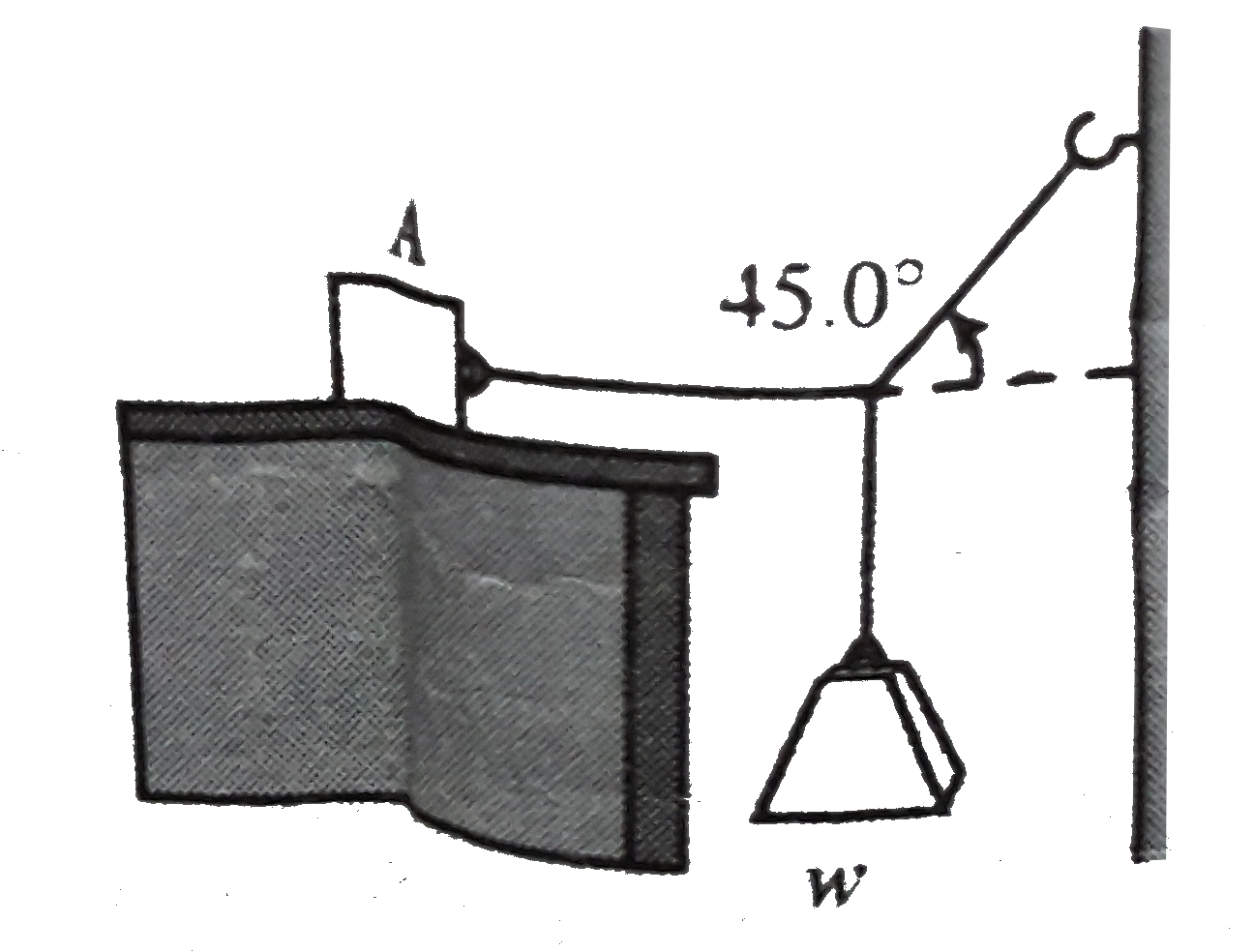 View Solution
View Solution
Knowledge Check
- Question 1 - Select One
What is the largest mass of C in kg that can be suspended without moving blocks A and B ? The static coefficent of friction for all plane surface of contact is 0.3 Mass of block A is 50kg and block B is 70kg. Neglect feriction in the pulleys.
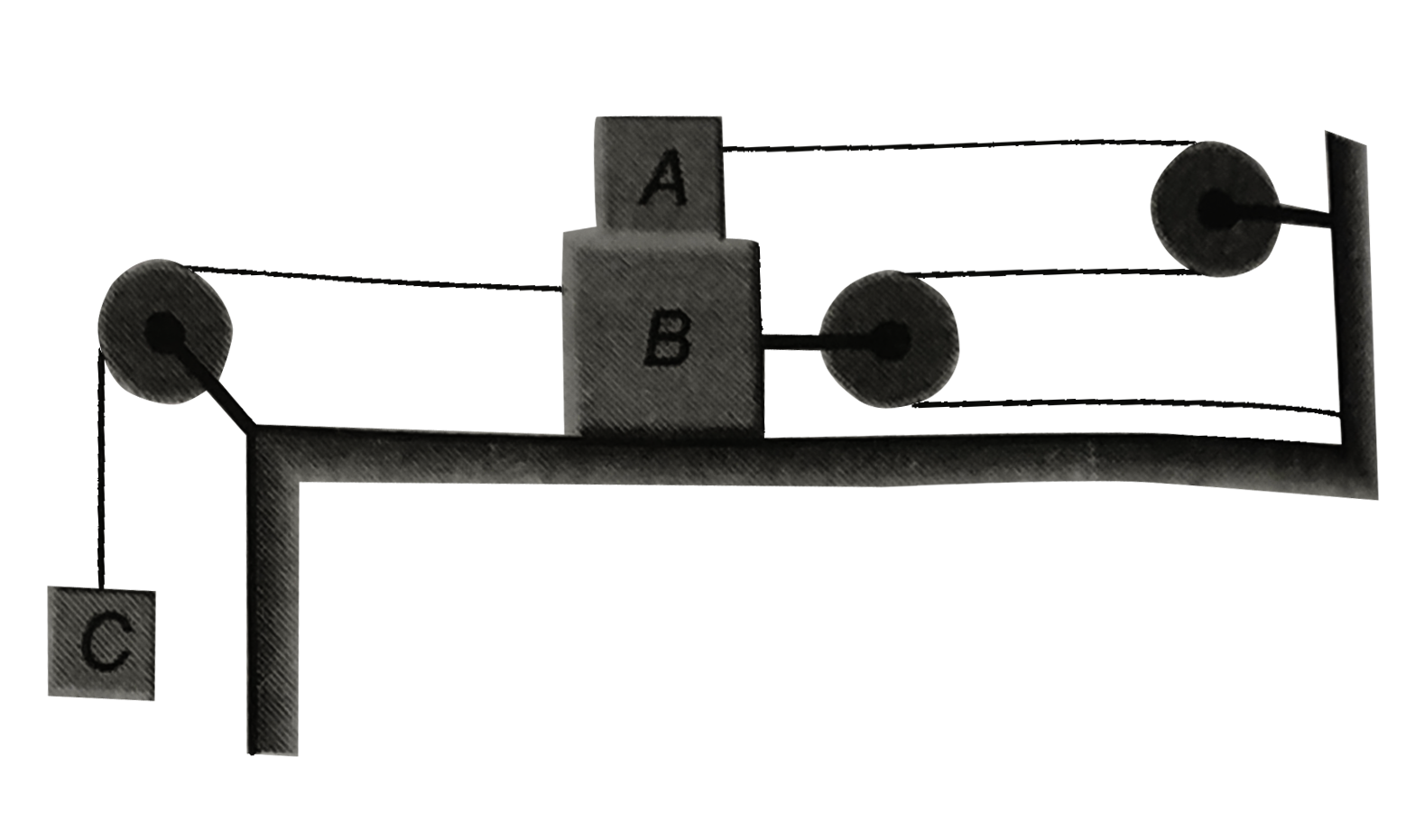 A120kgB92kgC81kgDNone of the above
A120kgB92kgC81kgDNone of the above - Question 2 - Select One
In the arrangement shown in figure coefficient of friction between 5kg block and incline plane is μ=0.5. Friction force acting on the 5kg block is
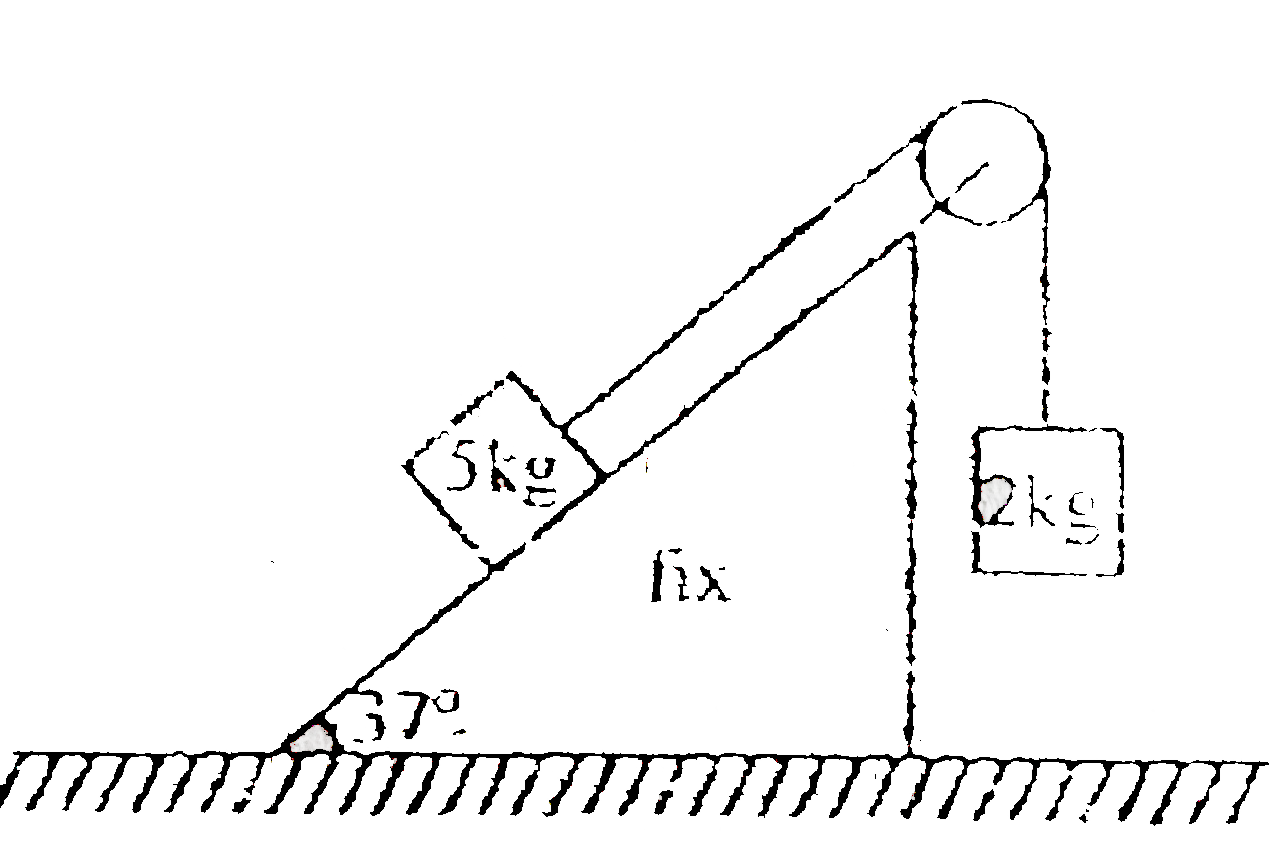 A20NB15NC10ND5N
A20NB15NC10ND5N - Question 3 - Select One
In the figure, m1=m2=10kg. The coefficients of friction between A,B and B, surface are 0.2. Find the maximum value of m3 so that no block slips ( All the pullies are ideal and strings are massless).
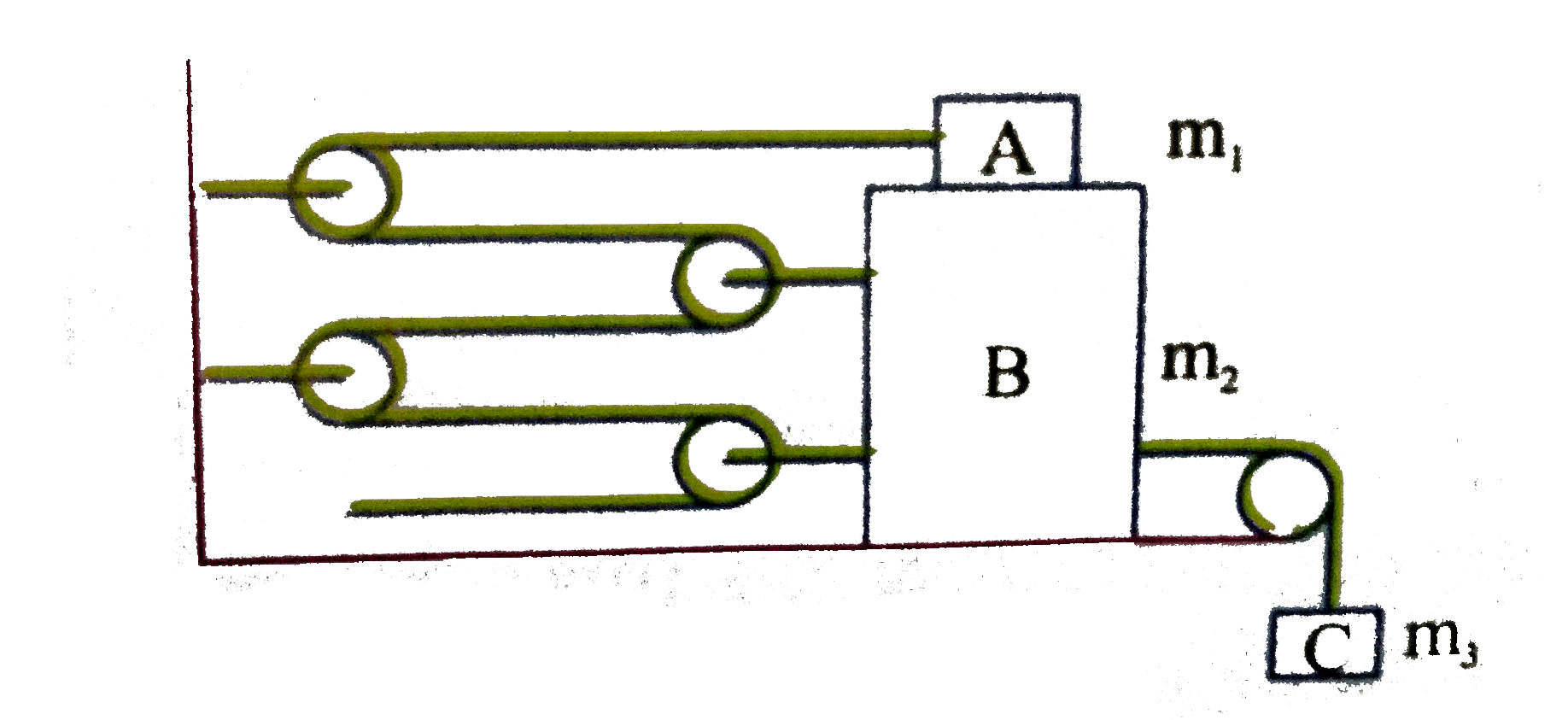 A16kgB10kgC18kgD14kg
A16kgB10kgC18kgD14kg
Three blocks A, B and C, whose masses are 9kg, 9kg and 18kg respectively as shown in the figure, are released from rest. The co-efficient of friction between block A and the horizontal surface is 0.5 & the co-efficient of friction between block B and the horizontal surface is 0.5. Find the acceleration of block C just release [Take g=10m/s2]. All strings and pulleys are ideal
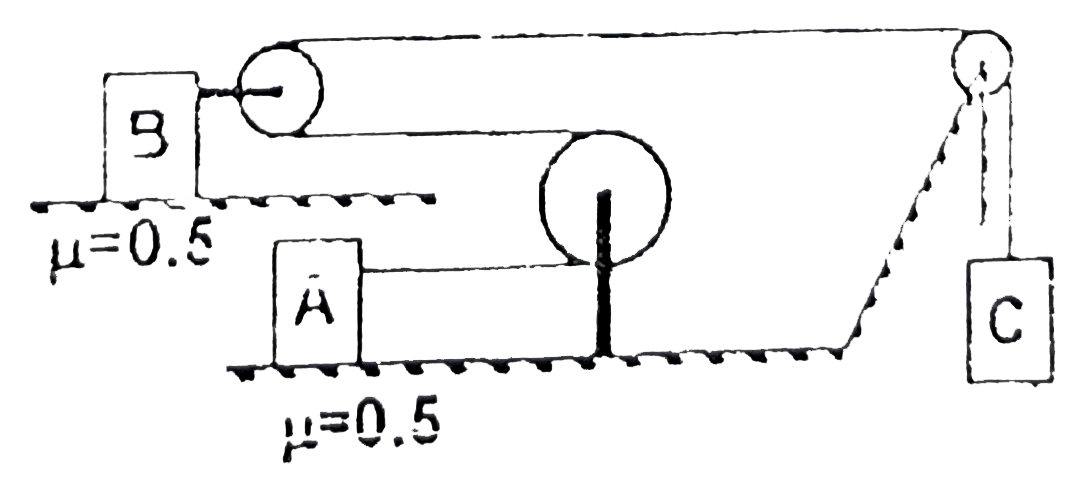 View Solution
View SolutionIf the mass of the block A = 10 kg and the coefficient of static and kinetic friction is 0.2, then the mass of block B to start the motion is
 View Solution
View SolutionIn the arrangement shown in figure pulleys are mass of block A,b and C is m1=5kgm2=4kg and m3=2.5kg respectively .Co-efficient acceleration of friction for both the plane is μ=0.50 Calculate acceleration of which block when system is released from rest
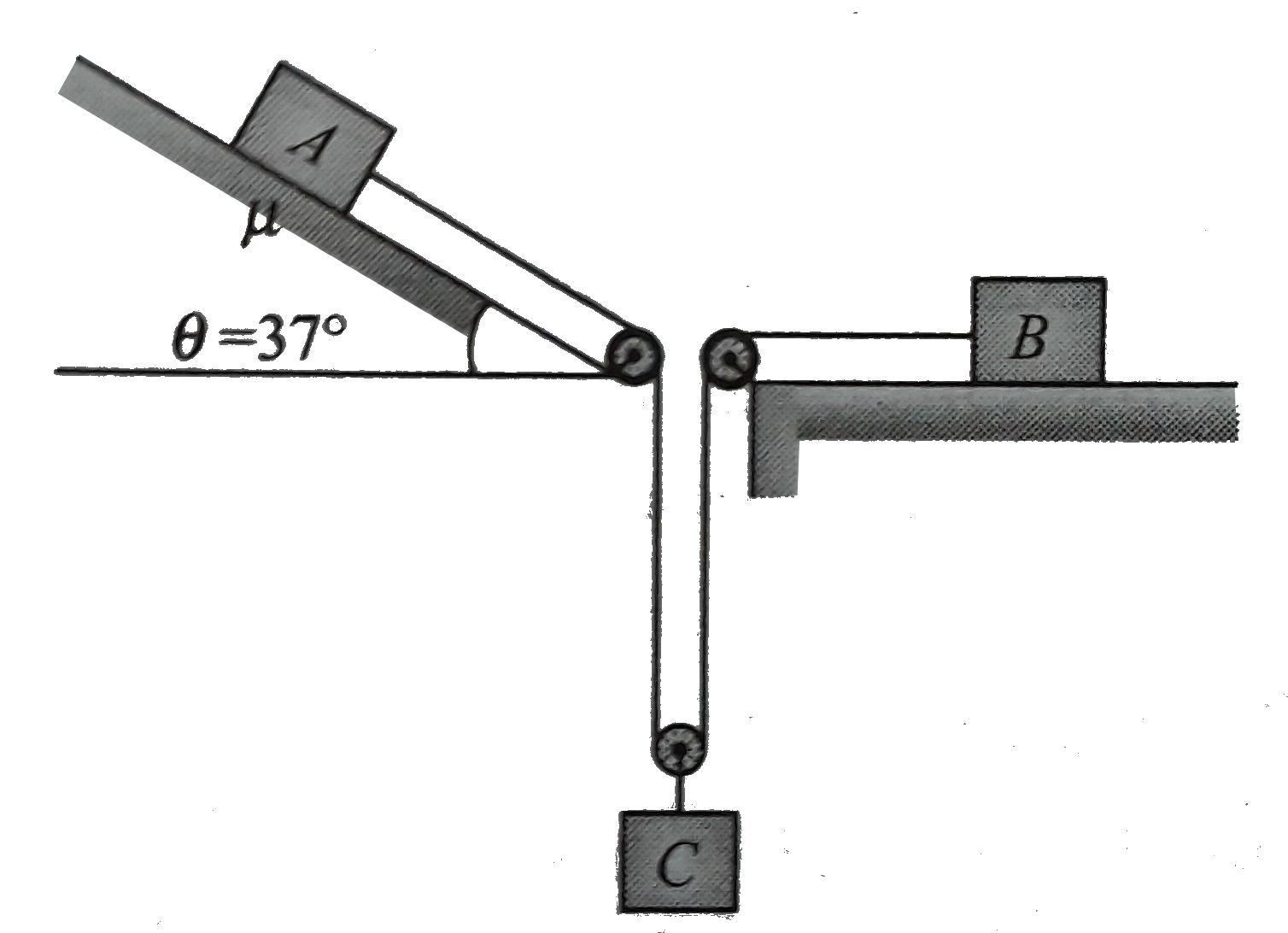 View Solution
View SolutionThe blocks A and B are arranged as shown in the figure. The pulley is frictionless. The mass of A is 10 kg . The coefficient of friction of A with the horizontal surface is 0.20. The minimum mass of B to start the motion will be
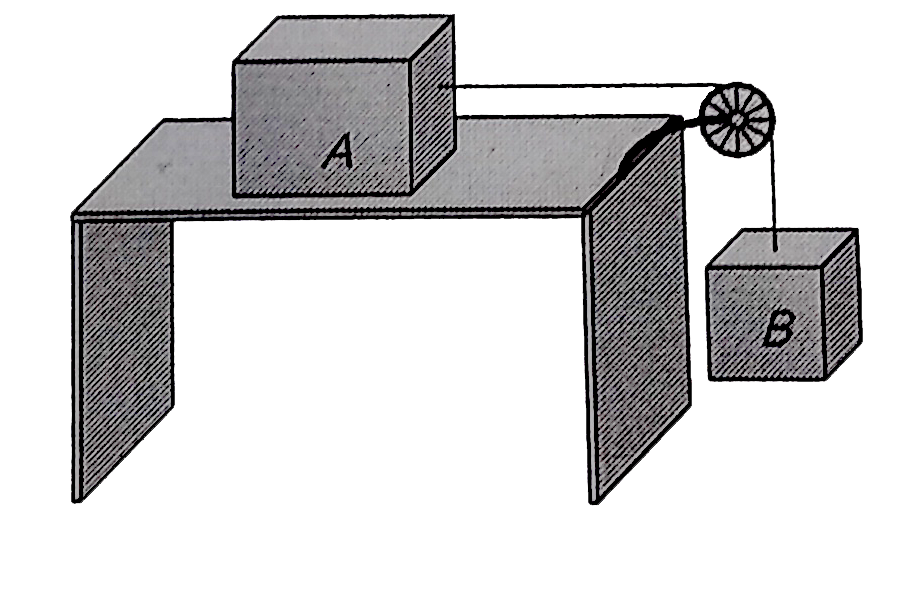 View Solution
View SolutionA block of mass M is sliding down the plane. Coefficient of static friction is μs and kinetic friction is μk. Then friction force acting on the block is :
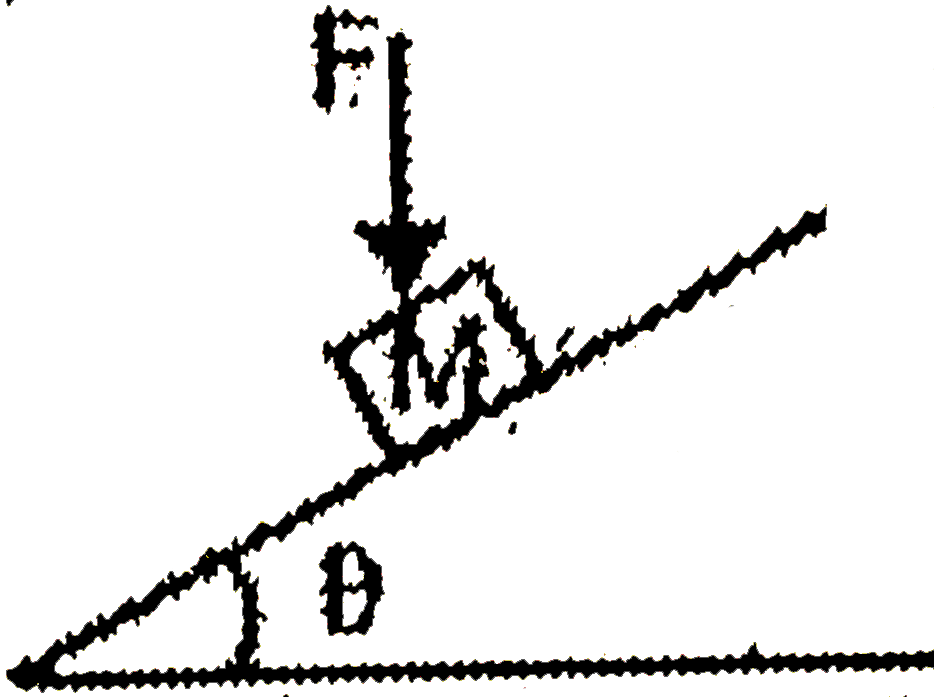 View Solution
View Solution

